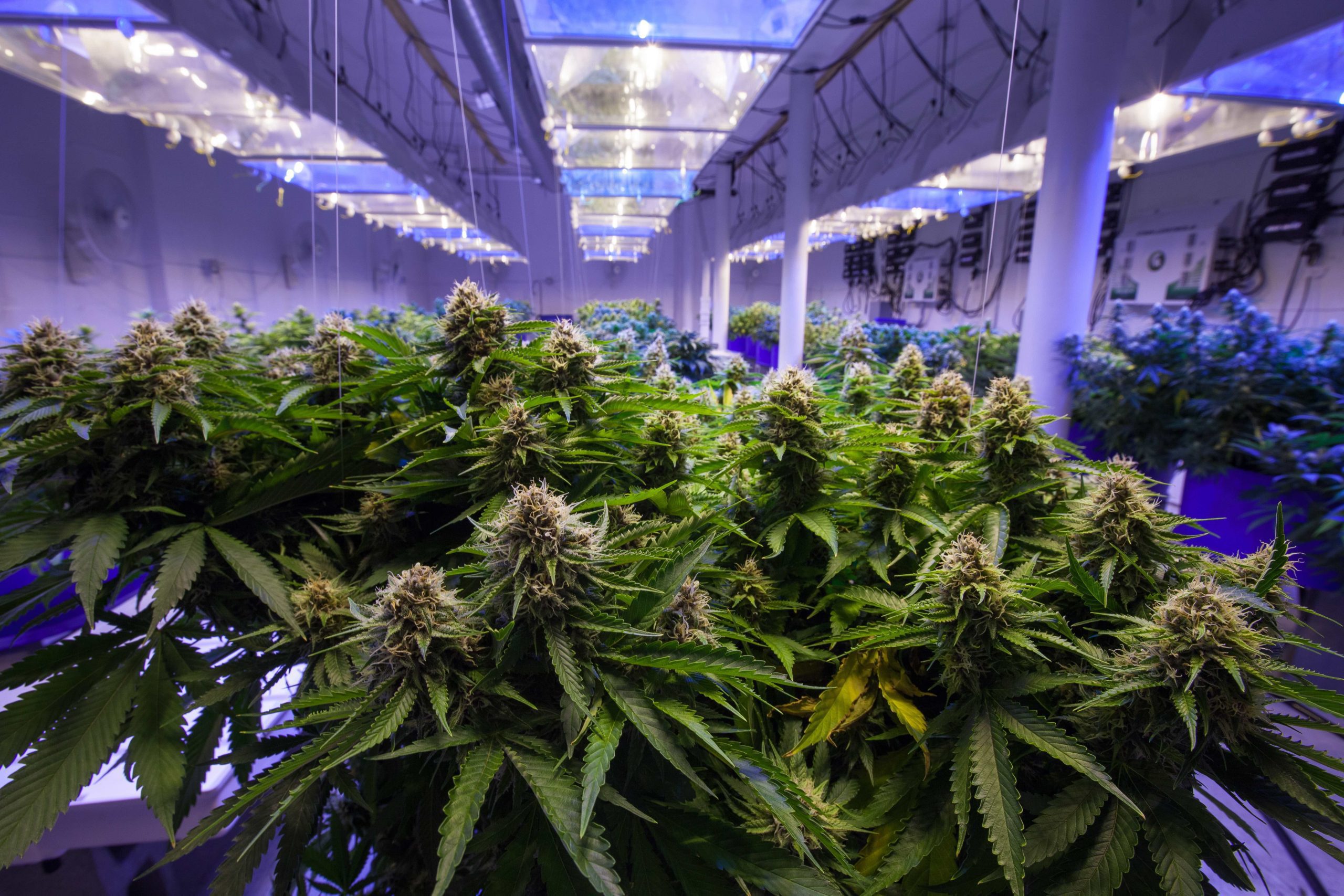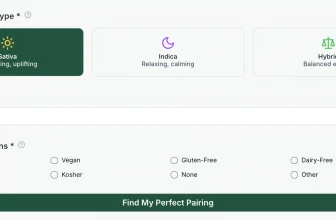
Learning how to grow weed takes time. If you’re ready to level up your green thumb XP (and save some money), but you aren’t sure how to grow weed, then this guide is for you. Fortunately, you don’t have to troll a hundred Reddit posts to accumulate all the info you need. We’ve done it for you.
Growing weed is a simple process once you have a solid understanding of the basics. However, the world of cannabis growing can indeed seem complex and even intimidating to the newbie learning how to grow weed.
While it may seem like a lot to learn at first, your entry into the agricultural science of cannabis cultivation is nowhere near as mysterious as it initially appears. Growing weed is no different than growing other types of plants. It’s just that green ganja growers like to treat their plants with extra care to get the best yield possible.
This article serves as a guide for beginners tackling their first crop. We cover all the basic components for setting up your grow room or garden and all the key factors to consider. You can use these tips to increase your chances of successfully growing weed indoors or outdoors.
How to Grow Weed Indoors
First, figure out where to start your first grow. While this largely depends on the resources at your disposal, you can work with whatever you have, no matter how minimal your setup is. Some growers have access to big, empty rooms where large tents can be set up, while others are limited to a small closet or corner of the bedroom. If you only have access to a small space, don’t worry. You can still get a decent harvest.
Strain Selection
Marijuana comes in a variety of shapes, sizes, flavors, and effects. There are two primary types of cannabis: indica and sativa. Hybrid varieties contain both genes in different amounts. In terms of impact, indica-dominant plants are associated with calming, heavy, and intoxicated feelings (think of smoking indica strains as getting stuck in-da-couch). In contrast, sativa-dominant strains offer energetic, cerebral, and motivating effects.
Also, consider how much space you have available. Sativas tend to get a lot bigger and longer, while indicas are shorter and bushier. If you don’t have a lot of room, think about growing an autoflowering strain. These strains can usually be kept at two feet tall and also have the advantage of having a shorter grow cycle.
Set Up a Dedicated Growing Space
If you have the space and are ready to make an investment while learning how to grow weed, a grow tent is the best way to go. These come in a variety of sizes and serve as an isolated environment that’s easy to regulate. You can also fit a grow tent with a filter outlet to reduce the dank and delicious (but potent and familiar) smell of cannabis plants.
By using a grow tent, you ensure your plants don’t get any light when they require darkness, especially if your home office is pulling double duty. If you don’t have access to a tent, you can convert cabinets and boxes to serve a similar purpose.
Lighting
Cannabis plants need a good source of light to achieve their full potential. This is possibly the most crucial factor to consider when growing weed indoors. The green pigment in cannabis leaves converts light into sugar, which they need to survive and thrive.
It’s worth investing in good lighting right from the start to avoid problems later. You can use various light sources, including high-pressure discharge lamps (HID lamps), plasma, LED, and compact fluorescent lamps.
Each of these light sources has advantages and disadvantages. If you’re just learning how to grow weed, LED lights are a good choice because they’re super affordable and produce minimal heat. A timer is also an excellent investment for automating the grow phase. Plants typically require a light cycle of 18 hours of light and six hours of darkness during the vegetative phase and a light cycle of 12 hours of light and 12 hours of darkness during the flowering phase.
Also make sure the height of your light is correct.
Choose Your Growing Medium
Cannabis plants can be grown in a variety of ways. Although this may seem like a difficult decision, selecting your soil is one of the easiest choices when you’re teaching yourself how to grow weed. Good old-fashioned soil is the easiest choice because it requires less effort and is cheaper. Some soils have already been given enough nutrients for the plants to survive the first few weeks of the vegetative phase.
Nutrients
Cannabis plants require an abundance of macronutrients and micronutrients for many physiological functions. In addition, different nutrients are required in varying amounts in different growth phases. The macronutrients that cannabis plants need in their diet are nitrogen, phosphorus, and potassium. Plants need extra nitrogen during the vegetative phase, while they need more phosphorus and potassium in the flowering phase.
The primary micronutrients your weed plants need are calcium, magnesium, iron, and copper. These nutrients can be taken from many different sources, from synthetic forms to organic compost. The easiest and best option for beginners is to purchase ready-made recipes for the growing season and flowering phase that can be added to the water and applied according to the product instructions.
Create an Ideal Climate
The magic of indoor growing is that you get to create and control an ideal artificial climate. For this, you’ll need some equipment to keep everything in an optimal range. Temperature is an essential factor to control. Cannabis plants prefer to grow in a temperature range of 68°F-86°F. If your grow room is already at this temperature, great. If it’s too hot or too cold in there, you have to use heating or air conditioning accordingly.
Humidity is another factor that you should monitor and possibly adjust. Cannabis plants like moisture in the air, but too much can increase the risk of mold. With a hygrometer, you can measure both the temperature and the humidity. Try to keep the relative humidity in your grow room at 40-60% during the vegetative phase and at 40-50% during flowering. If it gets too humid or too dry, use a humidifier or dehumidifier if necessary.
Cannabis plants also need a source of fresh air, which requires a fan and an exhaust fan. Most grow tents are compatible with both units, which bring new CO₂ into the room and remove the exhaled oxygen.
Watering Schedule
The watering schedule is one piece of the gardening puzzle in which many beginners run into trouble. Well, fear not, Flavor Fix fledgling. We know how to grow weed, so heed this vital piece of info: don’t overwater.
Lots of rookies think their plants require a lot more water than they actually need. One simple suggestion should keep you in the clear — let the top three inches of your soil dry before watering. Press your finger into the top layer of soil up to your first knuckle to check this. If it’s still damp, your plant doesn’t need water yet. Make sure your pots have adequate drainage so that the water doesn’t pool in the bottom and contribute to root rot.
You can water a thirsty plant, but it can’t recover from root rot.
How to Grow Weed Outdoors
Some growers are fortunate enough to have a garden or greenhouse. Growing outdoors means less control over environmental conditions, but it’s often much cheaper because water, light, and air are virtually free. Growing outdoors also usually means you have more space available.
Strain Selection
When growing outdoors, choosing a variety requires less consideration. Some growers will benefit from growing large sativa giants for optimal yield. Certain varieties grow up to 10 feet high and produce an impressive and rewarding harvest. However, if you want to keep your outdoor grow more secret, consider growing smaller indica or autoflowering strains.
On the other hand, if you’re growing in the short summers before a rainy or cold fall, you should choose a faster hybrid and avoid longer-flowering sativas.
Set Up a Dedicated Growing Space
Outdoors, cannabis plants can be grown in garden beds, pots, and greenhouses. This depends on your personal preferences and the resources available. Plants grown in beds have much more room for their root systems to spread, which allows them to grow much larger. However, large- and medium-sized pots will also result in a good yield. Grow your plants in a location with plenty of direct sunlight and a light breeze, away from places that could flood.
Check the USDA Hardiness Zone Finder to assist you in choosing a suitable variety and growing space.
Modify Climate
There isn’t much you can do to change the outdoor climate unless you’re already planning an escape to Norway, and there isn’t much you need to do unless you live in an area with extreme weather. If you live in a place where temperatures make the blood boil, you should put your plants under shelter during the hottest hours of the day to keep them from wilting. If it gets very cold at night (regardless of the season), you can also move your plants indoors if they’re in pots.
Watering Schedule
Outdoor plants follow a similar watering schedule as indoor plants. If you live in an especially hot and dry area, you may need to water them every day. As you become more experienced, you should experiment with irrigation systems like soaker hoses that allow this task to be automated. Again, too much water can be a bad thing and lead to root rot. If you’re growing in an overly humid climate, you may need to periodically cover your plants or move them permanently to a greenhouse.
Nutrients
Amateur gardeners will have the best results using premixed recipes for different phases of life. It’s easier to feed plants grown in pots as this limited space can be filled with organic potting soil and dosed with nutrients at regular intervals. Plants grown in beds have extensive root systems and will spread in search of food. Nutrients that are dispersed on beds can drain away, so it’s essential to start with good-quality soil.
Now You Can Grow Weed
Ta-da! Now you know how to grow weed. You can build upon this basic foundation to yield healthier, more potent plants every year. Time to put those gardening gloves on and get to work!






